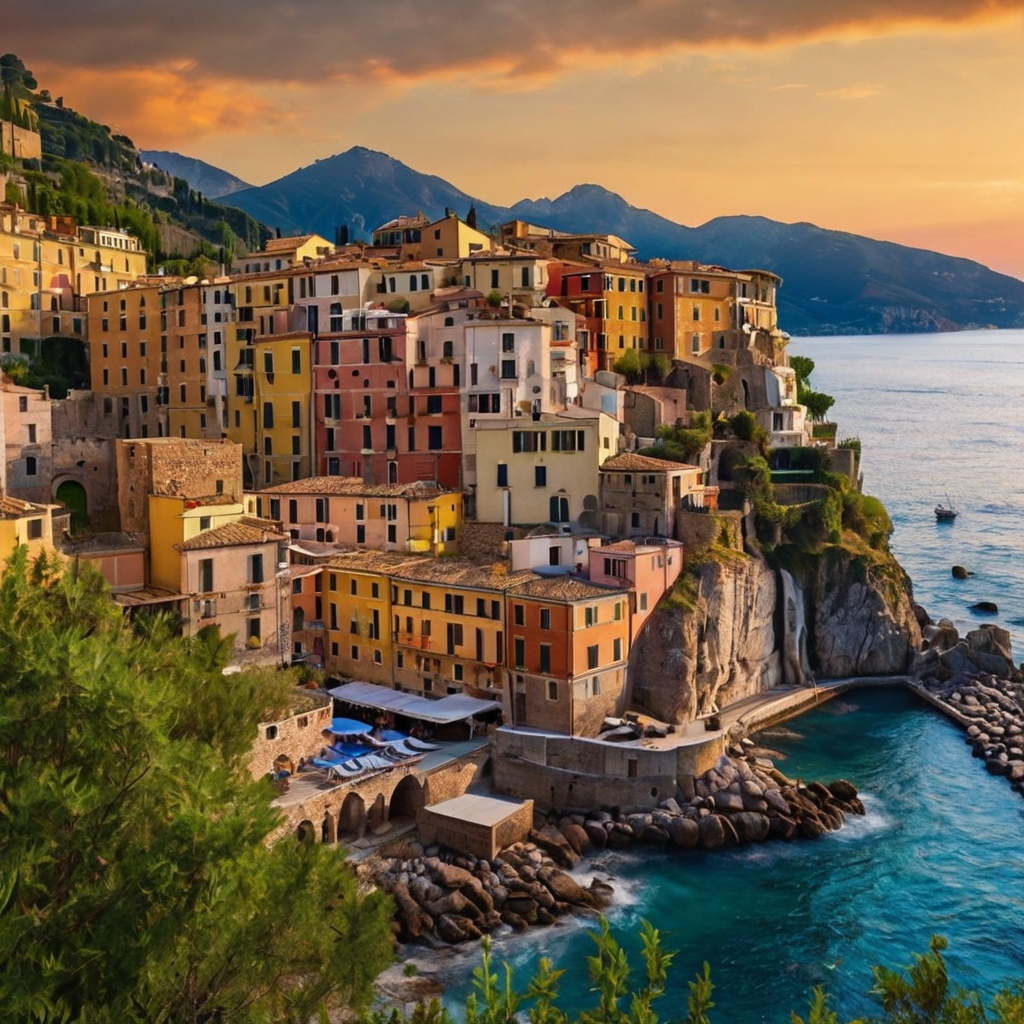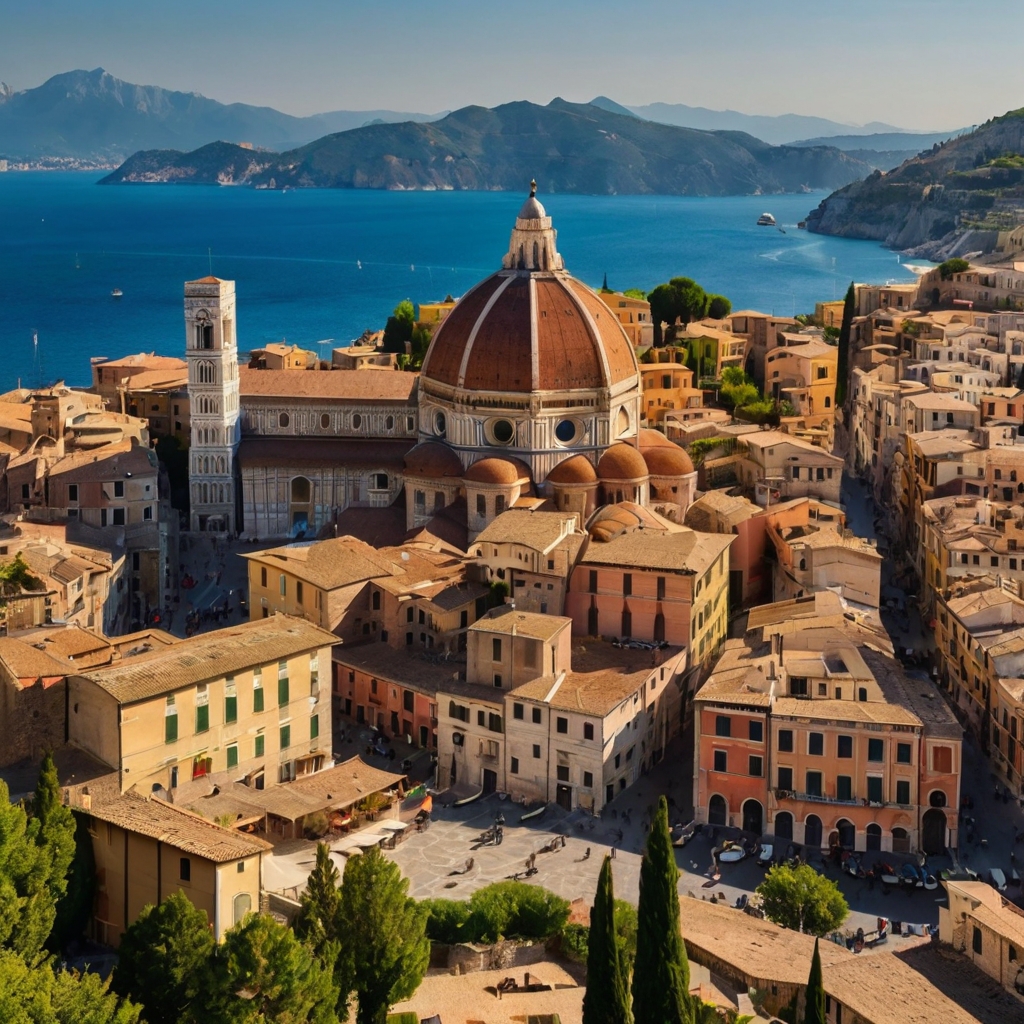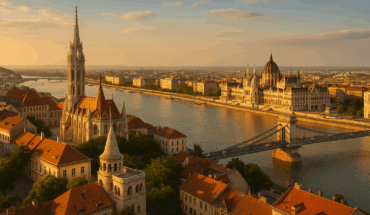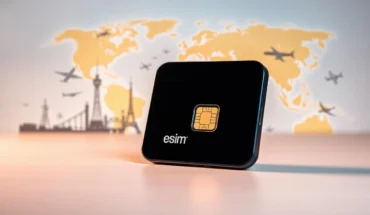A perfectly planned 7-day Italy itinerary can reshape the scene of a rushed vacation into an unforgettable adventure. Travelers face the challenge of experiencing Italy’s rich diversity without exhausting themselves in this fascinating country that unified in 1861.
Rome, Florence, and Venice stand out as ideal destinations to name just one example for first-time visitors planning a week-long Italian journey. A balanced experience comes from spending three nights in Rome, two nights in Florence, and two nights in Venice. This strategic 7-day Italian travel plan lets visitors maximize their time by using just five vacation days while enjoying seven full days in Italy. The stunning Amalfi Coast might appeal to those seeking coastal beauty, offering charming villages and delicious cuisine as an alternative destination.
Timing plays a vital role in planning an Italian adventure. The shoulder seasons from April-May and September-October offer the best periods to visit. These months provide pleasant weather with fewer crowds. The typical 7-day journey costs around €1,000 for solo travelers or €2,000 for pairs.
This complete guide offers day-by-day recommendations that help you experience Italy’s ancient wonders, artistic treasures, and hidden gems in a perfectly balanced week-long adventure.

Day 1-2: Exploring Rome’s Ancient Wonders
Rome makes the perfect kickoff point for any 7-day Italy trip. You’ll want at least two full days to soak in the city’s ancient beauty and the secret spots that locals love. Put on comfy shoes, start early, and you’ll see why Romans proudly say “Roma caput mundi” (Rome is the capital of the world).
Visit the Colosseum and Roman Forum
The mighty Colosseum stands as Rome’s most famous sight, pulling in almost 7 million people each year. Getting there before 8:30 AM helps you dodge the big crowds that show up later. Smart travelers buy combo tickets for both the Colosseum and Roman Forum. This saves money and time on your Italy trip.
Here are some insider tips:
- Book your tickets online a week ahead through the official coopculture.it website
- Go for “skip-the-line” tickets to avoid waiting 2+ hours in peak season
- Take a guided tour to get the full story behind these ancient places
Right next to the Colosseum sits the Roman Forum, once the Empire’s heart. You’ll walk past temples, basilicas, and monuments that helped shape Western civilization. The Palatine Hill ticket comes with your combo pass and gives amazing views plus a nice break from the busy forum below.
New visitors should set aside 3-4 hours to really see both sites. Don’t forget sunscreen – these archeological treasures don’t offer much shade.
Toss a Coin at the Trevi Fountain
A week in Italy isn’t complete without seeing the beautiful Trevi Fountain. This baroque masterpiece from 1762 remains one of Rome’s most popular spots. Legend says one coin means you’ll come back to Rome, two coins bring Italian romance, and three lead to marriage.
People toss about €3,000 daily into the fountain, which helps Rome’s charities. The best times to avoid crowds are early morning (before 8 AM) or late night (after 10 PM).
Gelateria Valentino sits just around the corner, where locals get their gelato fix. Try seasonal flavors like fig or persimmon instead of tourist favorites. The Spanish Steps nearby make great photos, but sitting there costs you a €400 fine.
The narrow streets between these famous spots hide cute cafés, craft shops, and amazing buildings that most 7-day southern Italy guides miss.
Explore Vatican City and St. Peter’s Basilica
Step into Vatican City and you’re in the world’s tiniest country and one of Italy’s most amazing places. St. Peter’s Basilica opens daily from 7 AM to 6:30 PM (7 PM April-September). The basilica costs nothing to enter, but climbing the dome runs €8 (or €10 with elevator access).
A 7-day Italy trip needs one full morning for the Vatican Museums and Sistine Chapel, plus an afternoon at St. Peter’s. The museums hold some of the world’s best art, ending with Michelangelo’s amazing Sistine Chapel ceiling.
Big crowds pack these places, especially Wednesday mornings during Papal Audiences. Here’s how to make the most of it:
- Get tickets online from the official Vatican website
- Show up at the museums by 8 AM (doors open at 9)
- Cover shoulders and knees in religious areas
- Try visiting after 2 PM when tour groups thin out
Use the special group exit from the Sistine Chapel straight to St. Peter’s Basilica. This saves a 30-minute walk around Vatican walls. Inside St. Peter’s, check out Michelangelo’s Pietà, Bernini’s baldacchino, and climb the dome for amazing Rome views.
Tuesday through Thursday usually means smaller crowds than weekends at Vatican City. Most Rome museums close Mondays, making it perfect for checking out neighborhoods like Trastevere or taking a food tour.
After two days in Rome, you’ll have seen the must-visit spots that set up the rest of your Italy trip. The city’s ancient sites help you appreciate Florence’s Renaissance treasures – your next stop on this week-long Italian adventure.
Day 3: Art and Culture in Florence
Florence greets you on day 3 of your Italy itinerary with its Renaissance treasures and artistic heritage. The birthplace of the Renaissance stands in perfect contrast to Rome’s ancient wonders, showcasing world-class art and breathtaking architecture. This compact city packs centuries of creative genius into walkable streets, making it a must-see stop on any northern Italy itinerary.
Climb the Duomo for panoramic views
Brunelleschi’s revolutionary dome crowns the magnificent Cathedral of Santa Maria del Fiore, dominating Florence’s skyline. This architectural marvel, completed in 1436 after 14 years of construction, still stands as the largest masonry dome ever built. Note that Duomo climb reservations are mandatory and can’t be changed once booked.
The climb takes you up 463 steep steps through narrow passages without elevator access. These passages were built for maintenance workers rather than tourists, so they get quite tight in spots. You’ll reach an interior walkway halfway up that gives you stunning views of Giorgio Vasari and Federico Zuccari’s Last Judgment frescoes (completed in 1579).
Your reward at the top? A 360-degree view of Florence’s terracotta rooftops, rolling Tuscan hills, and Renaissance landmarks. Book an early morning slot several weeks ahead to beat the crowds. The whole experience takes 45-60 minutes, and you’ll get about 20 minutes at the top.
See Michelangelo’s David at the Accademia
Michelangelo’s masterpiece is a must-see on any week-long Italy trip. This 17-foot (5.17m) marble giant, created between 1501 and 1504, weighs 5,560 kilograms. Unlike earlier artists who showed David after his victory, Michelangelo captured him before facing Goliath – tense and alert in perfect contrapposto pose.
The statue’s story includes:
- The cathedral commission deemed it too perfect to place high above ground
- It stood at Palazzo Vecchio’s entrance as Florence’s symbol of strength
- The public first saw it on September 8, 1504
- The Accademia Gallery became its home in 1873 to protect it from weather
Early morning visits work best to appreciate this Renaissance masterpiece. The Accademia opens at 8:15 am, and you’ll need 30-45 minutes. Book ahead and think about joining a guided tour to grasp the artistic importance and technical mastery of the work.
A close look reveals intentional anatomical exaggerations – the larger right hand and head – likely meant for viewing from below or to highlight David’s thought and action. His watchful eyes, visible veins, and taut muscles show Michelangelo’s exceptional grasp of human anatomy.
Stroll across the Ponte Vecchio
The Ponte Vecchio offers a perfect change of pace after your art encounters. This medieval stone bridge from 1345 was Florence’s only bridge that survived World War II. German forces blocked access by destroying buildings at both ends rather than the historic structure itself.
Shops built along its length make this bridge unique – a practice that was common once but now exists only here. Gold and jewelry shops replaced butchers and tanners in 1593 when Ferdinand I wanted to get rid of meat and tanning smells. Many of today’s shop owners come from the original craftsmen’s families.
The bridge shows its best side in the evening as wooden shutters create a charming, suitcase-like look along the walkway. Sunset brings out its romantic character with beautiful Arno River views. The eastern side features a bronze bust of Benvenuto Cellini, the famous 16th-century Florentine goldsmith.
Plan about two hours to explore these three Florence landmarks. This leaves time to wander the charming streets, browse leather goods at San Lorenzo market, or enjoy a classic Tuscan lunch before more Renaissance discoveries or heading off to tomorrow’s Tuscan countryside adventure.
Day 4: Tuscany Day Trip from Florence
Day 4 of your 7-day Italy itinerary takes you away from Florence’s Renaissance splendor to the beautiful Tuscan countryside. A world of rolling hills, medieval towns, and world-class wines lies just beyond Florence’s city limits. This world has fascinated travelers for centuries. Your one-week Italy itinerary needs this essential glimpse into rural Italian life.
Visit Siena or San Gimignano
Siena stands as the most famous hill town in Tuscany, a former bitter rival of Florence. This medieval gem survived WWII bombing, which helped preserve its historic character. The enormous Piazza del Campo will draw you in—one of Europe’s largest medieval squares—where the famous Palio horse race happens twice each year.
Siena’s stunning Cathedral of Santa Maria Assunta holds Renaissance masterpieces by Michelangelo, Donatello, and Pisano. The cathedral’s unique black and white marble creates an impression you won’t see anywhere else in your 7-day Italy travel itinerary.
San Gimignano gives you a different but equally fascinating experience. People call it the “Manhattan of the Middle Ages.” This UNESCO World Heritage site has 14 medieval stone towers that create an unforgettable skyline. You can wander through narrow cobblestone streets, craft leather shops, and wine stores at your own pace.
Travelers with limited time can reach both destinations by public transportation. Regional trains from Florence to Siena take about 1.5 hours and cost around $11. Busses are slightly faster at 1 hour 15 minutes. You can reach San Gimignano by taking a train to Poggibonsi and connecting to a 20-minute bus ride.
Enjoy a wine tasting in Chianti
Your week in Italy wouldn’t be complete without tasting Chianti’s legendary wines. The region between Florence and Siena shows off countless vineyard-covered hills where the world-famous Sangiovese grape grows beautifully. Wine tastings here give you more than just samples—they’re detailed cultural experiences.
Family-run wineries like Panzanello let you enjoy:
- Wine and olive oil tastings with bruschetta drizzled with fresh olive oil
- Guided tours through vineyards and cellars that explain the winemaking process
- Complete farmhouse lunches featuring up to five different wines paired with four-course traditional Tuscan meals
The Chianti wine experience usually includes their renowned Chianti Classico, 1427 Chianti Classico, Riserva 1427, and sometimes rosé and sparkling options. Most tastings showcase organic, locally-produced wines that perfectly represent the region’s terroir.
Independent travelers should expect to pay between €15 for simple tastings to €300 for premium experiences. The region’s average price is around €66, which changes based on duration, guide services, and what’s included. Make reservations several days ahead, especially during peak seasons.
Explore the Tuscan countryside
The Tuscan countryside shows Italy’s rural past perfectly—a beautiful blend of nature and human cultivation. The journey between destinations reveals postcard-perfect landscapes, whatever your 7-day northern Italy itinerary includes.
Your day trip will take you past carefully tended vineyards, olive groves, and patchwork fields of grain and sunflowers. Artists have found inspiration for centuries in these cypress-lined roads that wind through gentle hills dotted with farmhouses.
The countryside makes the journey worthwhile. A rental car gives you exceptional freedom to explore at your own pace, though tours can be convenient. The scenic route SR222 “Strada Regionale Chiantigiana” shows breathtaking views between Florence and Siena.
Smaller villages rarely appear in standard 7-day Italy itinerary guides. Places like Greve in Chianti, Monteriggioni with its intact medieval walls, or Castellina show authentic Tuscan life away from tourist crowds. These towns often have the best family-run trattorias and artisanal food producers.
Several highly-rated tours combine these experiences into detailed day trips from Florence if you don’t have a car. You can choose from small-group tours (max 14 people) to private excursions and Vespa adventures through the countryside. Prices start around €150, which includes transportation, guides, and often lunch with wine tasting.
This Tuscan day sits perfectly in the middle of your week in Italy—you get both urban exploration and rural charm before heading to Venice’s unique waterways on day 5.
Day 5: Venice’s Canals and Hidden Corners
Your fifth day takes you to Venice, where boats replace cars and canals serve as streets. This floating masterpiece shines as the crown jewel of any northern Italy week-long trip. The city might seem to defy logic, yet it works with amazing efficiency.
Ride a vaporetto down the Grand Canal
The Grand Canal, Venice’s main waterway, snakes through the city’s heart in an S-shape. A vaporetto (water bus) ride on Line 1 gives you the most authentic view of this aquatic boulevard. The 24-hour vaporetto pass costs €21 and makes great sense compared to the €7.50 single-trip ticket.
These tips will help you get the best views:
- Start from Piazzale Roma or Ferrovia (train station) and grab an outdoor spot at the front or back
- Pick a time between 10am-12pm to dodge the crowds
- Keep your camera ready near the Rialto Bridge
- Take the full route to see 170 buildings from the 13th to 18th centuries
The vaporetto lets you see Venice at your own speed. The 45-minute route gives you a perfect overview of the city’s layout.
Visit St. Mark’s Basilica and Doge’s Palace
St. Mark’s Square serves as Venice’s grand living room where everyone gathers. St. Mark’s Basilica dominates the square’s east end. This Byzantine marvel features 8,000 square meters of gold mosaics inside its domes and walls. The basilica doesn’t charge an entrance fee, but lines grow quickly—you’ll wait less if you arrive before 9:30am or after 4pm.
Next door stands the Doge’s Palace (Palazzo Ducale), the former home of Venice’s elected rulers. The palace shows off stunning Venetian Gothic architecture with its pink Verona marble and white Istrian stone facade. Visitors can walk across the famous Bridge of Sighs that links the interrogation rooms to the prison. The bridge got its name from prisoners who took their last look at beautiful Venice.
The Museum Pass costs €35 and lets you into both the Doge’s Palace and ten other city museums. You’ll need 3-4 hours to really see these two landmarks.
Wander through Dorsoduro and Cannaregio
Real Venice lives beyond the tourist spots. The Dorsoduro district houses art galleries and Ca’ Foscari University. The area feels more laid-back than San Marco. The Zattere promenade offers beautiful views of Giudecca island and makes a perfect sunset walk.
Cannaregio shows Venice at its most real. The world’s first Jewish Ghetto, dating back to 1516, sits in this neighborhood. Local cicchetti bars—Venice’s answer to tapas—fill these districts. People gather here for small bites and spritz cocktails. Bacaro Risorto near the Rialto and Al Timon in Cannaregio serve some of the best selections.
Take your afternoon to get lost in these neighborhoods. Venice’s small size means you’ll always find your way back to a landmark. These winding streets tell the city’s story better than any guide book. Your day balances Venice’s grand monuments with its quiet corners.
A perfect end to your day might be dinner at a traditional bacaro or pasta by the canal. It shows why Venice stands out as a highlight in any week-long Italian adventure.
Day 6: Island Hopping to Murano and Burano
The sixth day of your week-long Italy adventure takes you to the magical islands of Venice’s lagoon. These islands blend artistic traditions with stunning architecture to create an experience you won’t forget. You can reach these gems by vaporetto, and they add a perfect touch to any 7-day Italian journey.
Watch glassblowing in Murano
Seven small islands connected by bridges make up Murano, Italy’s glassmaking hub since 1291. Venice moved its glassmakers here that year to protect the crowded city from fires. The place feels like a miniature Venice with its canals and beautiful architecture that creates its own unique atmosphere.
Here are some great spots to see authentic glassblowing:
- The Glass Cathedral (Ex Chiesa Santa Chiara): You can watch 25-minute demonstrations daily from 10:30 to 16:30. Adult tickets cost €8, while seniors and students pay €5.
- Original Murano Glass (OMG): This furnace sits near the Murano Faro stop. Adult demonstrations start at €5, and children under 14 get in free.
Glass Masters show their skills by turning molten glass into beautiful vases, cups, and decorative pieces. They use blowing, rolling, and shaping techniques. Watch them blow into the rod – this creates an air bubble that shapes the glass into a perfect sphere.
See the colorful houses of Burano
Rainbow-colored houses along the canals greet visitors to Burano. Local stories tell us these bright colors helped fishermen navigate through thick Venetian fog. Today’s homeowners must keep these vibrant colors alive. They need city council approval before painting their houses to maintain this unique tradition.
Burano’s fame extends beyond its colors to its handcrafted lace tradition. Local artisans once made pieces for European nobility. They even created a collar for French King Louis XIV that legend says used human hair for extreme delicacy.
Your Burano visit gets better if you:
- Time your arrival late afternoon to catch the colors reflecting in canal waters – perfect for photos
- Look for Bepi Suà’s famous house, decorated with amazing kaleidoscopic patterns by this former cinema worker
- Explore quiet side streets away from busy areas to find the island’s true character
Try local seafood specialties
Both islands serve exceptional seafood based on old recipes using fresh catches from the lagoon. After your glassblowing experience in Murano, Trattoria Valmarana offers traditional Venetian dishes in a peaceful garden setting away from crowds.
Seafood stars in Burano’s food scene too. Risotto de Gò, made with local goby fish from nearby lagoons, stands out as the island’s signature dish. These restaurants serve authentic local cuisine:
- Trattoria al Gatto Nero: This family has run their restaurant since 1965, earning praise for seafood and risotto
- Riva Rosa Ristorante: A down-to-earth Michelin-starred spot known for homemade pasta and fresh seafood. They have an exclusive rooftop table – just one
- Trattoria da Romano: Four generations have kept this historic place going since the late 1800s. Many call it “One of the Best Fish Restaurants in Venice”
Don’t leave without trying Bussolà (or Buranelli), traditional butter cookies that end your island adventure perfectly.
You can reach these islands on vaporetto Line 12 from Fondamente Nove in Venice. The boat stops at Murano first (20 minutes) then continues to Burano (45 minutes total).

Day 7: Local Favorites and Farewell
The last day of your 7-day Italian adventure should be relaxed with authentic experiences that will stay with you forever. This is your chance to soak in those special Italian moments that locals enjoy every day.
Relax with a coffee in a quiet piazza
Coffee in Italy is the life-blood of culture that locals treat with almost religious dedication. Standing at a bar for your morning espresso gives you a perfect glimpse into everyday Italian life. Italian “bars” work differently from American coffee shops – they’re social spaces where locals chat freely with strangers while enjoying their morning coffee.
These coffee customs will help you blend with locals:
- Stand at the bar to drink your coffee—sitting down usually costs extra
- Skip cappuccinos after morning hours (though some Italians bend this rule occasionally)
- Ask for “caffè latte” or “latte macchiato” when you want coffee with milk—just saying “latte” will get you plain milk
Historic cafés like Venice’s Caffè Florian (Lord Byron’s favorite spot) or Rome’s Caffè Greco offer amazing atmospheres where literary giants once gathered.
Shop for souvenirs at local markets
Markets show you real Italian culture while giving you a chance to find unique memories of your week in Italy. Rome’s Sunday Porta Portese turns the city into a treasure hunter’s dream with vintage items, antiques, and handmade jewelry. Shopping here is green as you find unique second-hand pieces while reducing waste.
Florence’s Mercato Centrale is a food lover’s paradise. Fresh produce, meat, and fish fill the ground floor, while the upper level houses specialty food shops and restaurants serving local dishes like Lampredotto paired with Chianti Classico. Next door, San Lorenzo Market shows off Florence’s famous leather craft through quality jackets, bags, and belts.
Enjoy a final Italian dinner
Italian dining follows a time-tested structure that shows how to enjoy food and company. Start with aperitivo (sparkling drinks and light bites), then move to antipasti (appetizers like cured meats). Primi brings pasta or risotto, while secondi features meat or seafood with contorni (vegetable sides).
Your last evening calls for something memorable. You could end up where you started—in Rome, try your luck by spinning on the bull’s testicle in Galleria Vittorio Emanuele II, see Milan’s Duomo, or have dinner by the lake in Stresa if you’re flying from Malpensa. A proper Italian digestivo like limoncello or grappa will help your digestion after the meal.
This goodbye day rounds off your week in Italy with those perfect little moments that make Italian culture special—showing that the best memories often come from living like a local.
How to Get Around Italy Efficiently
The quickest way to get around the Italian peninsula lies in smart transportation planning that maximizes your italy itinerary 7 days. Italy stands apart from other European countries with its extensive rail network. Trains remain the top choice for locals and tourists who want to discover this beautiful country.
High-speed trains vs. regional trains
Italian railways feature two main types of train services that suit different travel needs and budgets. Trenitalia operates high-speed trains (Alta Velocità) including Frecciarossa (speeds up to 300km/h), Frecciargento (up to 250km/h), and Frecciabianca. These modern trains link major cities like Rome, Florence, Venice, Milan, and Naples. Their impact has been significant – airlines’ share of the Milan-Rome route dropped from 50% to just 14% between 2008 and 2018.
Regional trains are ideal for travelers planning a one week italy itinerary who want to visit smaller towns and rural areas beyond high-speed routes. These trains cost less but stop more frequently and move slower. Your italy travel itinerary 7 days becomes more flexible as regional trains connect you to places like Cinque Terre and smaller Tuscan towns.
Tips for booking Trenitalia and Italo
Train services in Italy run under two companies: government-owned Trenitalia and private operator Italo. Websites like Omio or Trainline let you compare both services at once. Bookings open four months ahead, though this window might shrink to 30 days during Europe-wide schedule changes.
Smart planning of your northern italy itinerary 7 days starts with early booking of high-speed trains. Ticket prices rise as travel dates get closer. Trenitalia’s fares include Base (flexible), Economy, and Super Economy options starting at €19.90 for Rome-Florence. Italo matches this with Flex, Economy, Low-cost, and eXtra MAGIC choices.
When to validate your ticket
Your italy one week itinerary needs proper ticket validation. High-speed train tickets with assigned seats and specific times don’t need validation. Regional train tickets without set times must be stamped before boarding. Yellow or green validation machines stand ready at station platforms.
Regional train e-tickets require online “check-in” on your travel day through your confirmation email’s link. Skipping ticket validation could cost you €100-500 in fines – an expense no 7 day italy itinerary needs!
Summing it all up
A week might seem short to experience Italy’s immense cultural treasures. This carefully crafted 7-day Italy itinerary provides the perfect introduction to this extraordinary country. Each destination brings distinct flavors of Italian life that blend into an unforgettable trip – from Rome’s ancient ruins to Florence’s Renaissance masterpieces and Venice’s enchanting canals.
This one-week Italy itinerary shines through its thoughtful balance. You’ll see iconic landmarks and find hidden corners that many tourists miss. Your trip becomes truly special with morning espressos at local bars, afternoons in vibrant neighborhoods, and evenings filled with regional cuisine that give authentic glimpses into everyday Italian life.
Italy’s efficient rail network makes city-to-city travel easy, though you need to remember ticket validation. This 7-day travel itinerary lets you enjoy every moment without rushing and gives each location time to show its unique character.
New visitors might want to pack more destinations into their 7-day Northern Italy itinerary. Experienced travelers know that slower travel creates deeper connections. The shoulder seasons from April-May and September-October are without doubt the best times to plan your trip, with pleasant weather and manageable crowds.
This trip barely touches Italy’s countless treasures. Rome, Florence, and Venice create the classic Italian triangle, while each region holds distinctive landscapes, cuisines, and traditions ready for future exploration. Your first visit will not be your last—after all, as the saying goes, all roads lead back to Italy.
Here are some FAQs about an Italy itinerary 7 days:
Is 7 days long enough in Italy?
A one week Italy itinerary gives you enough time to experience one region in depth or visit 2-3 major cities. While you can’t see all of Italy in 7 days, a well-planned one week in Italy itinerary allows you to immerse yourself in the culture and highlights. Many travelers find that focusing on either a northern Italy itinerary 7 days or southern Italy itinerary 7 days provides the most rewarding experience.
What is a good itinerary for Italy?
An excellent Italy one week itinerary typically includes Rome, Florence and Venice for first-time visitors. For a more relaxed one week itinerary Italy, you might focus on just Tuscany or a one week southern Italy itinerary featuring Naples, the Amalfi Coast and Pompeii. The best itineraries balance iconic sights with authentic local experiences and some leisure time.
Where to go in Italy in 1 week?
For a northern Italy itinerary 7 days, consider Milan, Lake Como, Verona and Venice. A southern Italy itinerary 7 days could feature Rome, Naples and the Amalfi Coast. Your one week Italy itinerary depends on your interests – art lovers might prefer Florence, while foodies may enjoy Bologna and Parma in a northern Italy itinerary 7 days.
How many days are sufficient to visit Italy?
While you can enjoy a taste of Italy with a one week Italy itinerary, 10-14 days allows for a more comprehensive experience. A one week in Italy itinerary works well for focusing on one region, like a one week southern Italy itinerary concentrating on Campania. Serious travelers often return multiple times to experience different areas beyond what a one week itinerary Italy can cover.
Where is the best place to visit Italy for the first time?
For first-timers, a one week Italy itinerary typically starts with Rome, Florence and Venice. These iconic cities offer the perfect introduction to Italy’s art, history and culture. If you prefer a one week southern Italy itinerary, Rome combined with the Amalfi Coast provides stunning scenery and ancient ruins.
Is Amalfi Coast worth visiting?
Absolutely – the Amalfi Coast deserves its place in any one week southern Italy itinerary. The dramatic cliffs, colorful villages and azure waters make it one of Italy’s most breathtaking destinations. While crowded in peak season, including it in your southern Italy itinerary 7 days offers unforgettable coastal views and excellent seafood.
What is the best month to go to Italy?
The ideal time for your one week Italy itinerary depends on your priorities – May-June and September-October offer pleasant weather and fewer crowds. A one week in Italy itinerary during July-August means hot weather and peak tourist season. For a northern Italy itinerary 7 days, spring and fall are particularly lovely, while a one week southern Italy itinerary works well into early November.
Which is better, Cinque Terre or Amalfi Coast?
Both are spectacular, but your choice depends on your one week Italy itinerary focus. Cinque Terre fits better in a northern Italy itinerary 7 days, with its hiking trails and colorful fishing villages. The Amalfi Coast shines in a one week southern Italy itinerary, offering more variety with Positano, Ravello and Capri. Consider your travel style – Cinque Terre is more casual, while the Amalfi Coast has more luxury options.


